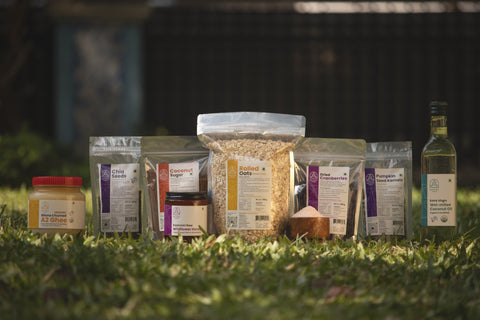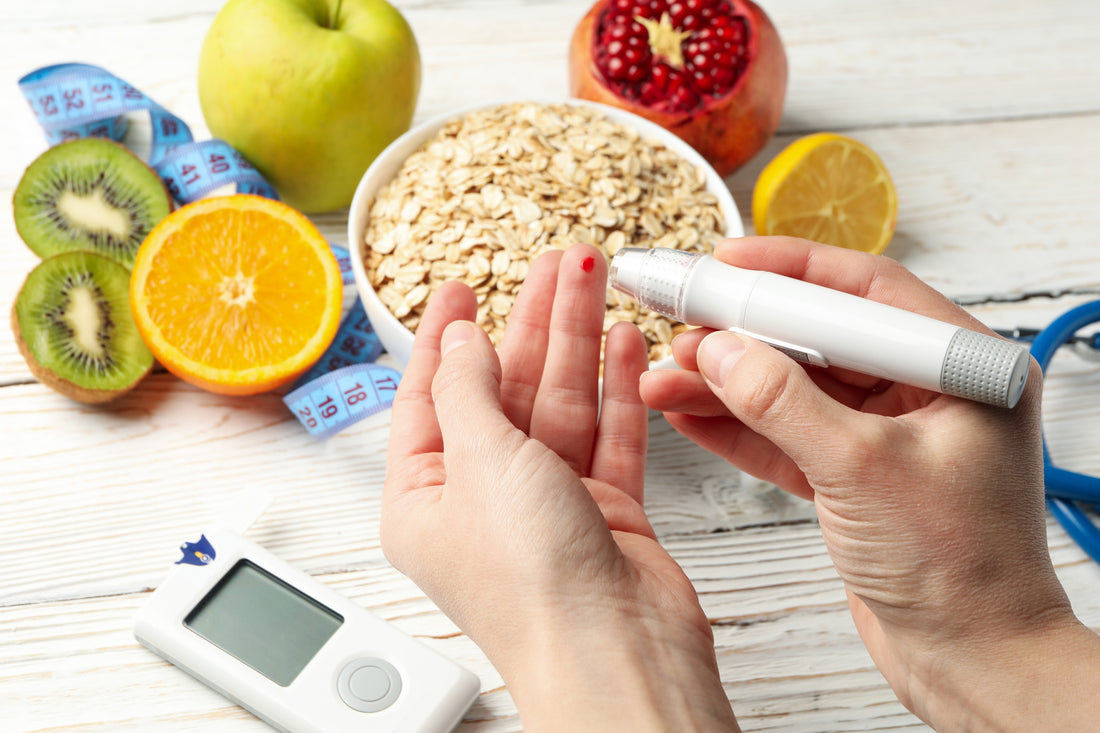Understanding Glycemic Index
The Glycemic Index (GI) is a valuable tool in understanding how different foods affect blood sugar levels. Developed in the 1980s by researchers at the University of Toronto, the GI measures how quickly carbohydrates in food are broken down into glucose and absorbed into the bloodstream. Foods are assigned a numerical value on a scale from 0 to 100, with pure glucose having a GI of 100 – the reference point against which all other foods are measured.

But what do these numbers mean for your health? In essence, the glycemic index provides insight into the rate at which a particular food raises blood sugar levels. Foods with a high GI value are rapidly digested and absorbed, leading to a quick spike in blood sugar levels followed by a subsequent crash. On the other hand, foods with a low GI value are digested more slowly, resulting in a gradual and sustained increase in blood sugar levels.
Importance of Glycemic Index in Health
Understanding the glycemic index is crucial for maintaining optimal health, particularly for individuals with diabetes or those at risk of developing the condition. High blood sugar levels, if left unchecked, can have serious consequences for health, including an increased risk of heart disease, stroke, and other complications. By choosing foods with a lower glycemic index, individuals can better control their blood sugar levels and reduce their risk of developing chronic diseases.
Simple Hacks on How to Reduce Glycemic Index
- Add Fibre: Incorporating fibre-rich foods into your meals can lower the overall GI. Soluble fibre, found in sources like acacia fibre and psyllium husk, forms a gel in the gut, slowing down digestion and glucose absorption. These fibres also promote gut health by serving as prebiotics, fostering the growth of beneficial bacteria.
- Change Eating Order: Altering the sequence in which you consume foods can affect their GI. Start your meal with vegetables, followed by protein and healthy fats, and save carbohydrates for last. This approach can influence how your body digests food, leading to better blood sugar control.
-
Consider Resistant Starch: Storing starchy foods like rice in the refrigerator after cooking can increase their resistant starch content. Resistant starch is not easily digested, resulting in a lower GI when consumed. If you're not willing to part with white rice and want to know how to reduce the glycemic index of rice, then this is the way to go about it!

- Avoid Overcooking: Overcooking food can break down its cell structure, making it easier to digest and raising its GI. Opt for shorter cooking times to preserve the integrity of foods and minimize blood sugar spikes.
- Include Vinegar: Adding vinegar, such as apple cider vinegar, to your meals can help lower the GI. Acetic acid in vinegar slows down the enzymes responsible for converting food into glucose, reducing blood sugar spikes.
- Embrace Whole Foods: Choose whole, minimally processed foods whenever possible. These foods tend to have lower GIs compared to their refined counterparts. Fill your plate with vegetables, fruits, nuts, seeds, whole grains, legumes, and protein for balanced nutrition and blood sugar control.
- Pair Nutrients: Combining carbohydrates with protein, fibre, or healthy fats can lower the overall GI of a meal. For example, spreading natural peanut butter on whole-meal bread or adding milk to breakfast biscuits can reduce their glycemic impact.
- Choose Wisely: Opt for unprocessed or minimally processed grains like whole-kernel bread, red rice, and steel-cut oats. These choices provide more nutrients and fibre, leading to slower digestion and better blood sugar regulation.
Additional Tips on How to reduce Glycemic Index
- Mindful Portion Control: Pay attention to portion sizes, as consuming large quantities of even low-GI foods can still impact blood sugar levels. Opt for smaller, balanced meals and snacks throughout the day to maintain steady energy levels.
- Stay Hydrated: Drinking plenty of water helps regulate blood sugar levels and supports overall health. Aim to stay hydrated throughout the day, especially when consuming high-GI foods, to minimize their impact on blood sugar.
- Regular Physical Activity: Engaging in regular exercise can improve insulin sensitivity, allowing your body to better manage blood sugar levels. Incorporate both aerobic and strength training exercises into your routine for maximum benefits.
- Monitor Blood Sugar Levels: If you have diabetes or are at risk for high blood sugar, regularly monitor your blood sugar levels to track how different foods and lifestyle choices affect your body. Consult with a healthcare professional for personalized guidance and recommendations.

- Choose Cooking Methods Wisely: Certain cooking methods can affect the GI of foods. Opt for methods like steaming, baking, and sautéing instead of frying, which can increase the GI. For example, baking sweet potatoes instead of frying them can help maintain a lower GI.
- Utilize Herbs and Spices: Incorporating herbs and spices into your cooking not only adds flavor but can also help lower the GI of your meals. Herbs like cinnamon, turmeric, and ginger have been shown to have potential blood sugar-lowering effects. Sprinkle them on dishes or add them to sauces and marinades for a flavorful boost.
- Experiment with Low-GI Alternatives: Explore alternative ingredients that have lower GIs to replace high-GI foods in your recipes. For example, swap white rice for goan rice or quinoa, or replace refined flour with almond flour or coconut flour in baking recipes. These substitutions can help lower the overall GI of your meals without sacrificing flavor.
- Include Prebiotics and Probiotics: Prebiotic-rich foods like onions, garlic, and leeks, as well as probiotic foods like yogurt and kefir, can support gut health and potentially help lower blood sugar levels. Incorporate these foods into your diet regularly to promote a healthy gut microbiome, which may contribute to better blood sugar control.
- Calculating Glycemic Load: While the GI measures how quickly a food raises blood sugar levels, the GL takes into account both the quality and quantity of carbohydrates consumed. Calculating the GL of meals can provide a more accurate picture of their overall effect on blood sugar levels.
Let us consider a practical example:
Suppose you wish to consume a packaged Fruit juice, now by itself that “Juice” is loaded with sugar. It is going to spike your blood sugar “instantly”. How can you prevent this? Add some acacia fibre into your drink and watch it work wonders for your body.

Additionally, you could consume some protein or fats before drinking the fruit juice. This could be either Quinoa, Pumpkin Seeds, Sunflower seeds, or Chia seeds. They are excellent sources of protein and fat, as well as fibre, and the best thing? It is all Vegan. So just by some simple snacking, you could activate your body and help it process.
Enhance Your Diet with Sattvic Foods
At Sattvic Foods, we offer a wide range of nutritious options to support your health goals. From seeds like pumpkin and sunflower to dried fruits such as blueberries and goji berries, our products are carefully selected to promote well-being. Explore our collection of grains, proteins, healthy fats, and more to elevate your meals and reduce your glycemic index. Shop now for Sattvic Products!

Reducing the glycemic index of your food is a simple yet powerful way to improve your health and well-being. By incorporating fibre, vinegar, and whole foods into your diet, you can enjoy delicious meals while keeping your blood sugar levels stable. Experiment with different strategies and ingredients to find what works best for you, and remember to prioritize quality and balance in your eating habits. With these tips, you can take control of your diet and reap the benefits of healthier eating.
Remember, small changes can lead to significant improvements in your health. Start implementing these tips today and experience the difference they can make in your life.
Disclaimer: This article is for informational purposes only and should not replace medical advice. Consult a healthcare professional for personalized recommendations.
